#greenbusiness
Text
7 Metaphysical Business Ideas
Hey I’m Inzamul, Welcome to my article today I am going to breakdown 7 Metaphysical Business Ideas
Are you someone who is drawn to the mystical and metaphysical realms? Do you have a passion for exploring the deeper aspects of life, consciousness, and the universe? The metaphysical industry is growing rapidly as more people seek alternative paths to wellness, enlightenment, and personal growth.
Want to fire your boss? Take control of your Online income & get Started Today.
1. Crystal Boutique
Crystals revered for their healing properties and energy work. Starting a crystal boutique can attract customers interested in spirituality, healing, and collectors of these natural gems. Offer a variety of crystals, from common stones to rare finds, and educate your customers on their uses in meditation, healing, and as decorative pieces.
2. Aura Photography Studio
Want to fire your boss? Take control of your Online income & get Started Today.
Aura photography is a unique service that captures the energy field surrounding a person. This business idea can be a hit at spiritual fairs, workshops, and online platforms. By providing visual insights into one’s aura, you can offer personalized readings and recommendations for energy alignment.
3. Reiki Healing Practice
Reiki is a Japanese technique for stress reduction and relaxation that promotes healing. As a Reiki practitioner, you can offer sessions that help clients balance their chakras and promote overall well-being.
4. Astrology Consultation Services
Astrology has seen a resurgence in popularity, with individuals seeking guidance through their birth charts. Offering astrology consultation services can cater to those looking for personal insights, relationship compatibility, and career advice based on celestial alignments.
5. Tarot Reading Business
Want to fire your boss? Take control of your Online income & get Started Today.
Tarot reading can provide guidance and clarity for those facing life’s questions. Whether it’s through a physical storefront or an online platform, tarot reading services can attract a diverse clientele looking for answers and direction.
6. Meditation and Mindfulness Workshops
The demand for meditation and mindfulness practices is on the rise as people seek ways to cope with stress and find inner peace. Hosting workshops or retreats can provide a space for individuals to learn and practice these techniques, fostering a community of like-minded individuals.
7. Metaphysical Subscription Boxes
Subscription boxes are a great way to provide a curated experience for spiritual enthusiasts. Each box can include items like incense, essential oils, spiritual books, or affirmation cards. This business idea offers convenience and discovery for customers eager to explore metaphysical products.
In conclusion, metaphysical businesses offer a unique opportunity to cater to a growing market of individuals seeking spiritual and personal growth. By focusing on authenticity, quality, and knowledge-sharing, entrepreneurs can build successful ventures that not only profit but also contribute to the well-being of their customers.
Want to fire your boss? Take control of your Online income & get Started Today.
Remember to incorporate relevant keywords throughout your article to enhance its SEO potential and ensure it reaches the right audience. Good luck with your metaphysical business venture!
Thanks for read my article, 7 Metaphysical Business Ideas
7 Metaphysical Business Ideas
Affiliate Disclaimer :
Some of the links in this article may be affiliate links, which means I receive a small commission at NO ADDITIONAL cost to you if you decide to purchase something. While we receive affiliate compensation for reviews / promotions on this article, we always offer honest opinions, users experiences and real views related to the product or service itself. Our goal is to help readers make the best purchasing decisions, however, the testimonies and opinions expressed are ours only. As always you should do your own thoughts to verify any claims, results and stats before making any kind of purchase. Clicking links or purchasing products recommended in this article may generate income for this product from affiliate commissions and you should assume we are compensated for any purchases you make. We review products and services you might find interesting. If you purchase them, we might get a share of the commission from the sale from our partners. This does not drive our decision as to whether or not a product is featured or recommended.
#EcoFriendly#Sustainability#GreenBusiness#ConsciousCapitalism#RenewableResources#EthicalEntrepreneurship#EcoInnovation#ClimateAction#ZeroWaste#RenewableEnergy#EcoLiving#GreenEntrepreneur#SustainableSolutions#EnvironmentallyFriendly#EcoConscious
0 notes
Text
Copper Scrap: Examining Strategies, Innovations, and Market Opportunities in the Global Recycling Revolution Market
The global copper scrap market size is anticipated to reach USD 105.90 billion by 2030 and is projected to grow at a CAGR of 8.6% from 2024 to 2030, according to a new report by Grand View Research, Inc. Increasing use of renewable energy sources for electricity generation has resulted in technological developments in the wind generation sector. This factor, coupled with rising awareness and emphasis on clean energy and sustainability, is expected to drive the demand for copper in wind energy production. This is set to become the biggest driver for the market over the forecast period.
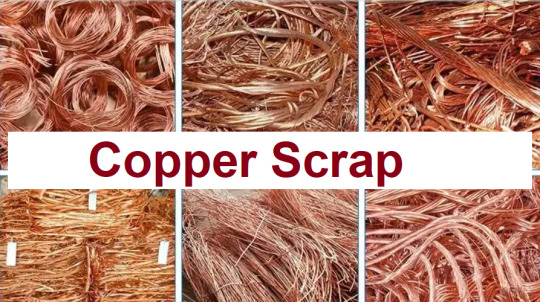
Copper Scrap Market Report Highlights
Based on feed material, the old scrap segment led the market with the largest revenue share of 51.6% in 2023. These enter the scrap value chain largely through an unorganized route.Old scrap remains the most predominant supply source of scrap, and this is expected to remain same during the forecast period
Based on grade, the #2 copper segment held the market with the largest revenue share of 31.6% in 2023, and it is also expected to grow at a significant CAGR over the forecast period, due to its wide availability
Based on application, the brass mills segment is expected to grow at the lucrative CAGR over the forecast period, owing to high demand from applications such as hardware & plumbing, valves, casings, and decorative items
Copper is of vital importance in wire & cable applications, and these are key enablers for global market.
Asia Pacific dominated the market with the revenue share in 2023, owing to factors such as focus on reducing carbon emissions by a shift in attention toward renewable energy, amendments in trade policy, and investments across Asia Pacific region are expected to positively increase copper scrap demand
In December 2022, AIM Recycling, a Canadian-based scrap recycler entered into a 50:50 JV agreement with Kalischatarra (Kalisch Recycling), a Mexican scrap recycler. This will expand the former’s customer reach in Mexico
For More Details or Sample Copy please visit link @: Copper Scrap Market Report
Further, rising investments in EV manufacturing facilities across the world are expected to positively influence copper usage, consequently benefiting the market growth over the forecast period. For instance, in March 2022, Suzuki Motor Corporation decided to invest USD 1,320.2 million in its manufacturing plant in Gujarat, India. It is also planned to produce 125,000 EVs by 2025. In addition, over past two years, companies such as Daimler, Stellantis, and General Motors invested USD 47.0, 35.0, and 23.0 billion for their EV production facilities, respectively.
Stringent environmental regulations were introduced to mitigate environmental adversities. As a result, scrap dealers are required to obtain a certificate of conformity that indicates scrap yards and businesses comply with waste regulations. Further, Standard Rules SR2015No3 describes metal recycling and waste electrical and electronic equipment authorized treatment facility (ATF) excluding ozone-depleting substances. A license is required for all metal trading and is issued by the local authority. These regulations influence demand for copper scrap and impact market growth.
The European Union has set an ambitious target to become climate-neutral by 2050. Owing to this, the region is witnessing a significant boost in the production of EVs. For instance, in July 2022, Volvo announced an investment of EUR 1.20 billion (USD 1.22 billion) to set up a new manufacturing plant in Slovakia, and the plant is expected to begin production by 2026. Similarly, the rising focus of European countries on sustainable and clean energy generation is propelling the demand for renewable energy like wind and hydro, which is positively impacting copper.
#CopperScrap#CopperScrapMarket#ScrapMetal#Recycling#CircularEconomy#Sustainability#WasteReduction#GreenTechnology#IndustrialRecycling#EconomicDevelopment#EnvironmentalImpact#RawMaterials#GreenBusiness#MetalIndustry#ResourceEfficiency
0 notes
Video
youtube
Measuring ecosystem performance for business resilience | Nature Is e105...
#youtube#EcosystemPerformance#BusinessResilience#NatureIs#KevinHalsey#E105#EcosystemManagement#Sustainability#EnvironmentalImpact#CorporateResponsibility#Biodiversity#GreenBusiness#EnvironmentalManagement#EcoFriendly#SustainableDevelopment
0 notes
Text
Revolutionizing E-Waste Recycling: Introducing WasteMaterial
E Waste Recycling Companies
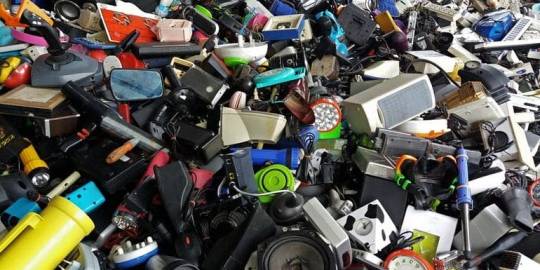
WasteMaterial: Leading the Charge in E-Waste Recycling
WasteMaterial is not just another E Waste Recycling Companies it is a pioneer in sustainable waste management solutions. Founded on the principles of environmental stewardship and technological innovation, WasteMaterial has emerged as a frontrunner in the industry, revolutionizing the way e-waste is handled and processed.
At the core of WasteMaterial’s operations is a commitment to maximizing resource recovery while minimizing environmental impact. Through state-of-the-art recycling facilities and cutting-edge technologies, WasteMaterial efficiently processes various forms of e-waste, including old computers, mobile phones, televisions, and other electronic devices.
Why Choose WasteMaterial?
Environmental Responsibility: WasteMaterial prioritizes environmental sustainability in every aspect of its operations. By recycling e-waste responsibly, WasteMaterial helps mitigate the environmental hazards associated with improper disposal, such as soil and water contamination and greenhouse gas emissions.
Advanced Recycling Technologies: WasteMaterial employs advanced recycling technologies to extract valuable materials from e-waste efficiently. Through processes like shredding, sorting, and refining, WasteMaterial can recover precious metals, plastics, and other valuable components, diverting them from landfills and reintroducing them into the production cycle.
Data Security: In an era where data privacy is paramount, WasteMaterial understands the importance of securely managing electronic devices. Whether it’s wiping sensitive data from hard drives or ensuring the safe disposal of electronic components, WasteMaterial prioritizes data security throughout the recycling process, giving clients peace of mind.
Compliance and Certifications: WasteMaterial adheres to strict regulatory standards and holds certifications that attest to its commitment to quality and compliance. By partnering with WasteMaterial, clients can rest assured that their e-waste is handled in accordance with the highest industry standards, minimizing legal and reputational risks.
The Future of E-Waste Recycling: A Circular Economy Approach
As the global demand for electronics continues to rise, the need for sustainable E Waste Recycling Companies solutions has never been more pressing. WasteMaterial recognizes that traditional linear models of consumption and disposal are no longer viable in the long term. Instead, WasteMaterial advocates for a circular economy approach, where resources are continuously recycled and reused, minimizing waste and maximizing value.
Through initiatives such as product refurbishment, component recovery, and material repurposing, WasteMaterial aims to close the loop on e-waste, creating a circular ecosystem where resources are conserved and waste is minimized. By adopting a holistic approach to E Waste Recycling Companies, WasteMaterial not only reduces the environmental footprint of electronic devices but also creates economic opportunities and fosters innovation in the recycling industry.
Join the Movement Towards Sustainable E-Waste Management
In conclusion, WasteMaterial stands at the forefront of the e-waste recycling revolution, offering comprehensive solutions that combine environmental responsibility, technological innovation, and regulatory compliance. As consumers, businesses, and governments increasingly prioritize sustainability, WasteMaterial provides a beacon of hope in the quest for a cleaner, greener future.
Together, let us embrace the challenge of E Waste Recycling Companies and pave the way for a more sustainable tomorrow. Join WasteMaterial in its mission to transform the e-waste landscape and build a world where waste is no longer seen as a problem but as a valuable resource waiting to be reclaimed.
#EWasteRecycling#SustainableTech#WasteMaterial#CircularEconomy#GreenTechnology#RecyclingInnovation#DataSecurity#EnvironmentalResponsibility#ElectronicWaste#RecyclingRevolution#SustainableFuture#TechRecycling#GreenBusiness#ResourceRecovery#EWasteManagement
0 notes
Text
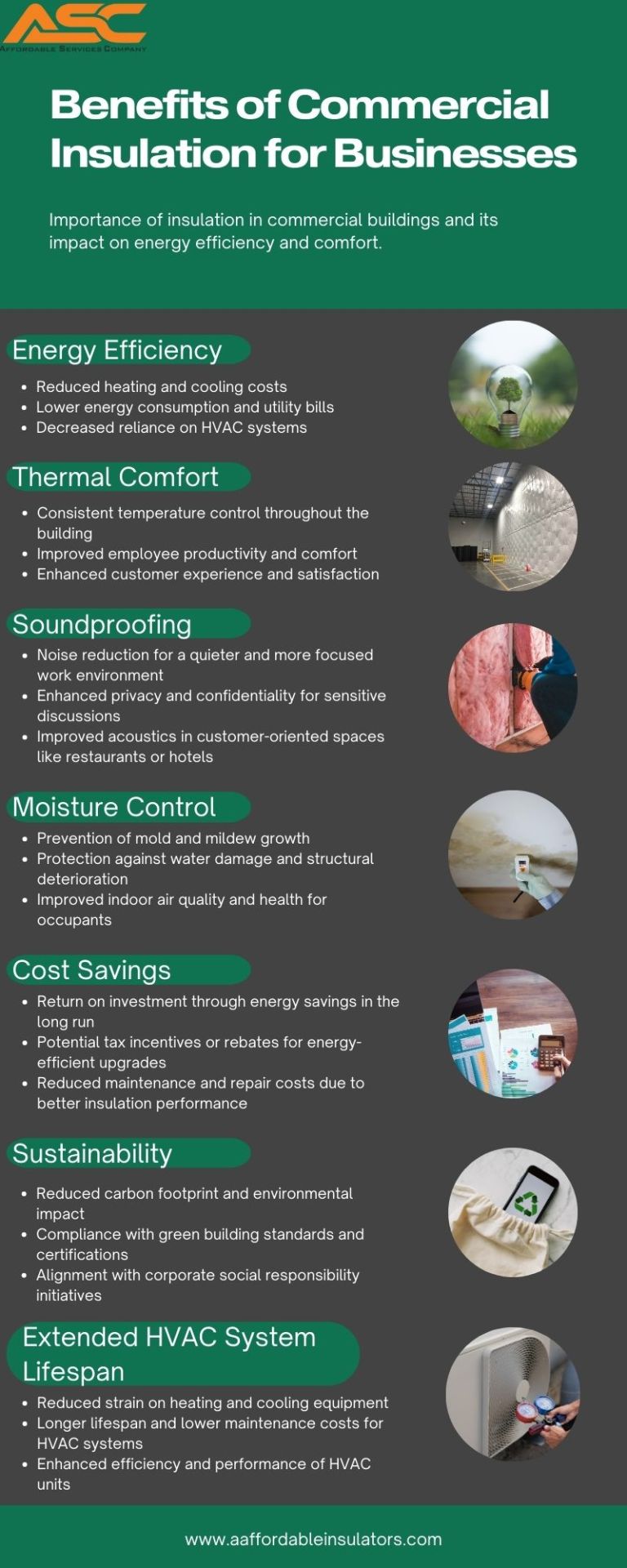
Discover the benefits of commercial insulation for businesses. Improve energy efficiency, reduce costs, enhance comfort, and create a sustainable workspace.
#CommercialInsulation#EnergyEfficiency#CostSavings#SustainableWorkspace#InsulationSolutions#BuildingEfficiency#ComfortableWorkplace#GreenBuilding#InsulationContractors#ThermalComfort#Soundproofing#MoistureControl#HVACEfficiency#EcoFriendly#GreenBusiness
0 notes
Text
Is Sustainability a Competitive Advantage: Exploring Eco-Friendly Practices in Business?

In today's rapidly changing business landscape, sustainability has become more than just a buzzword; it's a powerful competitive advantage. Eco-friendly practices in business are not just about being environmentally responsible, but also about reaping substantial benefits that can give your company a significant edge in the market. This blog will delve deep into the world of sustainability, shedding light on its importance in modern business and providing valuable tips on implementing eco-friendly practices to gain a competitive edge.
The business world is evolving, and consumers are increasingly demanding eco-conscious products and services. Sustainable practices are no longer an optional choice but a necessity. This shift in consumer preferences, combined with growing environmental concerns, has made sustainability an essential aspect of business strategy.
So, let's explore how embracing eco-friendly practices can drive your business forward in today's competitive market.
The Importance of Sustainability in Business
Sustainability is no longer a distant goal but a fundamental element of modern business strategy. Embracing eco-friendly practices can lead to numerous benefits, not only for the environment but also for your bottom line. Here are some compelling reasons why sustainability should be a priority for your business:
Enhanced Reputation and Brand Image:
Sustainability initiatives can boost your company's reputation and brand image. Consumers are more likely to trust and support businesses that prioritize environmental responsibility. A strong sustainability reputation can help you stand out from competitors and attract a loyal customer base.
Cost Savings:
Implementing eco-friendly practices often leads to reduced operational costs. Energy-efficient technologies, waste reduction, and sustainable supply chain management can result in significant savings over time. These cost savings can improve your company's profitability and competitiveness.
Regulatory Compliance:
Governments worldwide are implementing stricter environmental regulations. By proactively adopting eco-friendly practices, you can ensure compliance with these regulations, avoiding costly fines and legal issues that non-compliant businesses may face.
Access to New Markets:
Sustainable practices can open doors to new markets and customer segments. Many consumers are actively seeking eco-friendly products and services. By catering to this demand, your business can tap into previously untapped markets and diversify its customer base.
Employee Engagement and Productivity:
Sustainability initiatives can also boost employee morale and productivity. Employees often take pride in working for socially responsible companies. By engaging your workforce in sustainability efforts, you can create a more motivated and committed team.
Risk Mitigation:
Climate change and environmental issues pose risks to businesses. By adopting eco-friendly practices and reducing your environmental footprint, you can mitigate these risks and protect your long-term viability.
Now that we have highlighted the importance of sustainability, let's explore some practical tips for implementing eco-friendly practices in your business.
Tips for Implementing Eco-Friendly Practices in Business
Conduct a Sustainability Audit:
Begin by assessing your current environmental impact. Identify areas where your business can reduce its carbon footprint, such as energy consumption, waste generation, and water usage. A sustainability audit will provide a baseline for improvement.
Set Clear Sustainability Goals:
Define specific and measurable sustainability goals for your business. These goals should align with your company's values and long-term vision. Whether it's reducing greenhouse gas emissions, increasing recycling rates, or sourcing sustainable materials, having clear objectives will guide your efforts.
Invest in Energy Efficiency:
Energy consumption is a significant contributor to environmental impact. Invest in energy-efficient technologies and practices, such as LED lighting, smart thermostats, and energy-efficient appliances. Implementing these changes can lead to substantial energy savings over time.
Embrace Sustainable Supply Chain Management:
Evaluate your supply chain for opportunities to source materials and products from eco-friendly suppliers. Consider factors like transportation emissions, ethical labor practices, and sustainable sourcing. Collaborate with suppliers committed to environmental responsibility.
Reduce, Reuse, Recycle:
Implement waste reduction strategies within your organization. Encourage employees to reduce paper usage, recycle materials, and reuse office supplies whenever possible. Reducing waste not only benefits the environment but also lowers operational costs.
Educate and Engage Employees:
Create a culture of sustainability within your company by educating and engaging employees. Provide training on eco-friendly practices and involve employees in sustainability initiatives. Encourage their ideas and contributions to make sustainability a collective effort.
Explore Green Technology:
Consider adopting green technologies that align with your business operations. For example, electric vehicles for your company fleet, solar panels for energy generation, or green building materials for construction projects. These investments can pay off in the long run while reducing your environmental impact.
Monitor and Report Progress:
Regularly track and report your sustainability progress to stakeholders, including employees, customers, and investors. Transparency about your eco-friendly practices can enhance your company's reputation and hold you accountable for achieving your sustainability goals.
Engage with Sustainability Certifications:
Seek certifications such as ISO 14001 (Environmental Management System) or B Corp certification to demonstrate your commitment to sustainability. These certifications provide third-party validation of your eco-friendly practices and can help attract environmentally conscious customers.
Collaborate and Share Best Practices:
Join industry associations and collaborate with other businesses to share best practices and innovative ideas for sustainability. Learning from others and staying updated on industry trends can help you stay competitive in the eco-friendly market.
Incorporating these eco-friendly practices into your business operations can lead to long-term benefits and give you a competitive edge in today's market.
Explore How EconStra Helps in Implementing Eco-Friendly Practices in Business
In a world where businesses constantly search for the missing pieces of the puzzle, there is a growing realization that sustainability is the key to unlocking a competitive advantage. Let me take you on a journey to explore how eco-friendly practices are transforming the landscape of business.
Picture this: You wake up every day, not just with the knowledge that your business is thriving, but also that it's making a positive impact on the environment. This dream is not far from reality, and it's happening for forward-thinking companies embracing sustainability.
Meet Sarah, the owner of a small clothing brand. She once struggled to find her place in the fiercely competitive fashion industry. Then, she made the switch to eco-friendly materials and ethical production practices. Today, Sarah proudly says, "Our customers appreciate our commitment to sustainability, and it sets us apart from the rest." Her business not only survived but found a unique edge in the market.
Another entrepreneur, Alex, had a similar story. His restaurant was struggling until he adopted sustainable sourcing practices. "Not only do we attract eco-conscious customers, but our reduced waste also means cost savings," Alex shares. Sustainability not only revived his business but made it more profitable.
So, what exactly is this transformative force that is helping businesses like Sarah's and Alex's flourish? It's the adoption of eco-friendly practices, a commitment to sustainability, and a realization that being environmentally conscious is not just the right thing to do but also a strategic advantage.
Embracing sustainability means reducing carbon footprints, minimizing waste, and utilizing renewable resources. It's not just about being green; it's about building a resilient, future-proof business.
Imagine having a business where every product is made from recycled or sustainable materials, and every process is designed to minimize environmental impact. From supply chain optimization to waste reduction strategies, eco-friendly practices are a comprehensive approach to sustainability.
And here's the exciting part: Many consumers are actively seeking out eco-conscious businesses. They want to support brands that align with their values, and sustainability has become a key purchasing factor. By embracing eco-friendly practices, you not only differentiate your business but also tap into a growing market of environmentally conscious consumers.
But sustainability isn't just about appealing to customers; it's about securing your business's future in a world increasingly focused on environmental responsibility. Regulations and consumer expectations are evolving, and businesses that fail to adapt may find themselves left behind.
So, what's stopping you from making sustainability your competitive advantage? It's time to take that first step towards a more environmentally conscious and successful business. Embrace eco-friendly practices, reduce your environmental footprint, and position your business for long-term success.
Remember, the missing puzzle piece for your business might just be sustainability. Join the ranks of businesses that are not only thriving but also making a positive impact on our planet. Let's embark on this journey together towards a brighter, more sustainable future for your business.
In an era where environmental consciousness is rapidly becoming integral to corporate responsibility, the question arises: Is sustainability a competitive advantage in the business world? As companies seek to align their practices with eco-friendly initiatives, the answer becomes increasingly clear. Embracing sustainable business practices not only contributes to a healthier planet but also positions companies as forward-thinking and socially responsible entities. Enter Econstra, one of the business consultants in India is committed to guiding enterprises towards sustainable success. With a comprehensive approach to integrating eco-friendly practices into business strategies, Econstra empowers organizations to thrive in a landscape where sustainability is more than just a buzzword—it's a key differentiator. Discover how Econstra can help your business gain a competitive edge by navigating the intricate intersection of profitability and environmental responsibility. Embrace the future of business with Econstra, where sustainability isn't just a choice; it's a strategic advantage
The Bottom Line
Sustainability is indeed a competitive advantage in today's business landscape. Eco-friendly practices in business go beyond just environmental responsibility; they are essential for building a strong brand, reducing costs, and accessing new markets. By prioritizing sustainability, your company can enhance its reputation, achieve cost savings, and mitigate risks associated with environmental challenges.
Implementing eco-friendly practices in your business requires commitment, planning, and collaboration. Conducting a sustainability audit, setting clear goals, and investing in energy efficiency are excellent starting points. Engaging employees, exploring green technology, and reporting progress are key steps in your sustainability journey.
Remember that sustainability is not a one-time effort but an ongoing commitment to making a positive impact on the environment while reaping the rewards of increased competitiveness and profitability. By embracing sustainability, your business can thrive in a world where eco-consciousness is no longer a choice but a necessity.
#SustainableBusiness#EcoFriendlyPractices#CorporateSustainability#GreenBusiness#CompetitiveAdvantage#SustainableSuccess#EnvironmentallyFriendly#BusinessEthics#GreenInnovation#SustainabilityMatters#CSR (Corporate Social Responsibility)#GreenEconomy#ClimateAction#EcoSmartBusiness#SustainableLeadership#EthicalBusiness#GreenTech#SustainableFuture#BusinessImpact#EcoFriendlyBiz#startup consultants#business consulting
0 notes
Text
"Unlock Sustainable Success: Dive into 'Developing an Effective ESG Strategy'! 🌍📘"
#ESGStrategy#SustainableSuccess#EnvironmentalImpact#SocialResponsibility#GovernanceFramework#SustainabilityGuide#BusinessInnovation#CorporateResponsibility#GreenBusiness#SustainableGrowth#ClimateAction#CorporateSustainability#GlobalImpact#ESGReporting
0 notes
Text

EPR – Extended Producer Responsibility – Plastic, Battery, Rubber e-waste
EPR registration is vital for importers, ensuring legal compliance, environmental stewardship, and efficient waste management. It builds consumer trust, conserves resources, and, in the long run, leads to cost savings. Embrace EPR to demonstrate commitment to sustainability and responsible business practices. Non-compliance with EPR regulations can result in penalties for importers.
Visit on - www.lunarexim.com
Contact us - +91 8655463232
#LunarExim#EPR#Sustainability#GoGreen#EnvironmentalResponsibility#SustainableFuture#EcoFriendly#BusinessSustainability#ReduceReuseRecycle#GreenBusiness#CorporateResponsibility#Worldcup#Viral#IndVsAus#Diwali
0 notes
Text

Brighten Your Business's Horizon with Solar Permit Specialists! 🌟
Embark on a journey towards sustainability with our customized solar plans for permits and expert design & permitting services. Here's why we're the perfect fit for businesses like yours:
🌞 Efficiency Unleashed: Our solar plans are crafted for maximum efficiency, ensuring optimal energy harnessing for your business.
📑 Seamless Permitting: Navigating through permits can be complex, but not with us! We handle the paperwork, making the process smooth and stress-free.
🌍 Sustainability at Heart: Join us in the green movement! Our commitment to sustainability aligns seamlessly with your business goals.
🌐 Global Impact: Beyond local, make a global impact. Our design & permitting services contribute to a cleaner, greener planet.
Ready to embrace a brighter, sustainable future for your business? Connect with Solar Permit Specialists today! ☀️🌱
#SolarPower#GreenBusiness#SustainabilityJourney#SolarPermitSpecialists#greenliving#solardesign#solarenergy#solarinstallation#cleanenergy#contractors#homeowners#renewableenergy#gogreen
0 notes
Text
How Eco-Friendly Furniture Choices Benefit Your Business?

What is Eco-Friendly Furniture?
Eco-friendly furniture is more than just a label; it is a commitment to sustainability. It encompasses a range of factors, from the materials used to the manufacturing processes involved. Sustainable furniture is built to last and ensures there is reduction in waste production, hence diminishing the need for frequent replacements.
Materials that qualify as eco-friendly are often reclaimed, recycled or derived from renewable sources. Manufacturing processes are optimized to minimize waste and energy consumption. By choosing eco-friendly furniture, businesses make a clear statement about their dedication to saving the planet from further destruction. Read more for EcoFriendly Benefits at https://www.tradegully.com/how-eco-friendly-furniture-choices-benefit-your-business/
#EcoFriendlyDesign#GreenBusiness#EnvironmentallyFriendly#GreenOffice#SustainableLiving#EcoConscious#FurnitureDesign#tradegully
1 note
·
View note
Text

Together, we can make a difference for our planet, our businesses, and future generations. Let's shape a brighter future, one renewable energy source at a time. Don't hesitate to get in contact with Advance Biofuel.
#Advancebiofuel#RenewableEnergy#SustainableBusinesses#GreenTech#EcoFriendly#CleanEnergy#Biofuels#PoweringTheFuture#GreenBusiness#GreenTechnology#GreenPower#Trend#G20#India
0 notes
Text
Non-Ferrous Scrap Recycling Markets Path to Economic Prosperity and Environmental Stewardship
The global non-ferrous scrap recycling market size is anticipated to reach USD 308.5 million by 2027, expanding at a CAGR of 2.8%, according to a new report by Grand View Research, Inc. The growth of the market is attributed to increasing consumer awareness pertaining to recycling coupled with the rising production of secondary metals. The primary production of metals is a capital intensive procedure and consumes lots of energy. Usage of scrap in metal production reduces manufacturing costs and energy consumption, making secondary metal production both economically and environmentally friendly. This compels the manufacturers to opt for secondary production, giving rise to more demand for scrap metal.
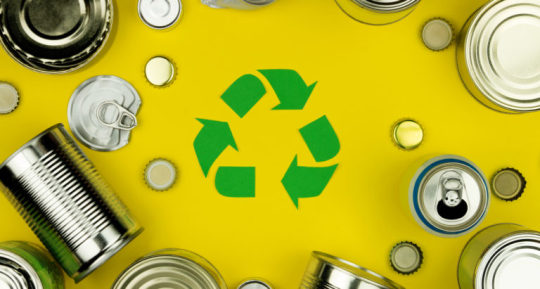
Non-ferrous Scrap Recycling Market Report Highlights
Asia Pacific held the highest revenue share of over 45.0% in 2019 owing to increasing investments and initiatives towards generation and processing of non-ferrous scrap in the region
Automotive is anticipated to witness a CAGR of 2.9%, in terms of revenue, over the forecast period owing to the rise in the number of discarded vehicles every year across the globe
Copper held the largest revenue share of over 56.0% in 2019 owing to its high price compared to other metals and its increasing demand from construction and consumer goods sectors
Construction held the largest volume share of 36.0% in 2019 owing to high consumption of non-ferrous metals like aluminum, copper, and zinc in infrastructural developments and high recovery rate of these metals
Considering the increasing demand for non-ferrous metals, investments in the industry are evident. For instance, in March 2018, Meldgaard opened its facility in Denmark for recycling ash and heavy metal processing.
For More Details or Sample Copy please visit link @: Non-ferrous Scrap Recycling Market Report
Based on metal, the market has been segmented into aluminum, copper, lead, and others. There are various types of non-ferrous metals of which aluminum and copper account for a higher share owing to their phenomenal properties. Such properties propel their use in various applications including construction, automotive, and consumer goods industries. As a result, these three sectors are the major contributors to the generation of non-ferrous metal scrap.
Aluminum is extensively used in the construction industry owing to its lightweight characteristics in various structures such as roofing, walls, door and window frames, and even handles. Its usage is increasing in the automotive industry as well in vehicle body frames. The metal has a high recovery rate from both the construction and automotive sectors, which makes its largest segment, in terms of volume, of the global market.
Non-ferrous accounts for a higher revenue share than ferrous scrap in the overall market owing to their high prices. However, the spread of the covid-19 pandemic has caused the prices of the metals to decline drastically. In India, prices of aluminum and copper dropped by 5% in February 2020 from January 2020. The pandemic caused the shutting down of manufacturing operations and restricting transportation, which resulted in low demand for these metals, resulting in a decline in prices.
Construction and automotive are major shareholding sectors in terms of scrap generation; however, their growth rate is less when compared to consumer goods. Household appliances and other consumer goods have a short lifespan than structures and vehicles, owing to which these products tend to turn into scrap faster than products of the other sectors.
Asia Pacific accounted for the largest volume share in 2019 and this trend is anticipated to continue over the forecast period. The growth is augmented towards Japan, India, and Southeast Asian countries, which are taking efforts in improvising their recycling industry. The nations are inviting investments for the industry to propel market growth. For instance, in 2019, Jiangxi Copper Co. announced its plan to build a plant for producing refined copper in Malaysia, where scrap shall be used as a key raw material.
The growth of the non-ferrous scrap recycling industry is expected to be further propelled by government initiatives. For instance, on March 27, 2020, the Indian Ministry of Mines released a Draft National Non-Ferrous Metals Scrap Recycling Policy for emphasizing on the underdeveloped non-ferrous scrap recycling sector in the country. India is a huge hub of scrap generation; however, due to unorganized nature and less consumer awareness towards recycling, the country majorly relies on imports for its consumption. Such policies are expected to address the issues pertaining to recycling in the country.
The market is both highly competitive and unorganized in nature. The COVID-19 pandemic has largely impacted market growth and players of the industry as of 2020. Factors like shortage of workers, no demand from manufacturing plants, no inflow of scrap in yards owing to social distancing, and transport restrictions have led to the shutdown of many recycling centers. As of March 2020, non-ferrous scrap processors in China reduced their operating capacity to 40-50% owing to declining orders.
#NonFerrousScrap#ScrapMetalRecycling#CircularEconomy#Sustainability#ResourceEfficiency#WasteManagement#GreenTechnology#EnvironmentalImpact#AluminumRecycling#CopperRecycling#BrassRecycling#PreciousMetals#EcoFriendly#RawMaterials#IndustrialRecycling#GreenBusiness#WasteReduction
0 notes
Text
BEE registration in India - Process
The Bureau of Energy Efficiency (BEE) in India is a governmental organisation established under the Ministry of Power on March 1, 2002. It operates in accordance with the Energy Conservation Act of 2001. BEE’s primary objective is to promote and facilitate energy efficiency initiatives across various sectors in the country.
It mandates energy efficiency standards, conducts awareness programs. It also issues certification to manufacturers, importers and traders of electric appliances as per BEE guidelines. It is important for all the manufacturers and traders to acquire BEE certification in order to commence their business in India.
Who needs a BEE Certificate:
Manufacturers
Importers
Traders
Benefits of having BEE Certificate:
Compliance
Efficiency
Standards
Reputation
*If you want to know about EPR Registration, NGO Darpan Registration, GeM Registration, or APEDA Registration
#BEERegistration#EnergyEfficiency#GreenBusiness#SustainableSolutions#EnergyConservation#BEECompliance#CleanEnergy#EcoFriendlyBusiness#ReduceEnergyConsumption#RenewableEnergy#EcoCertification#EnergySavings#BEEStandards#GreenCertification#EnvironmentalResponsibility#BureauOfEnergyEfficiency#EnergyEfficientIndustry#EcoBusiness#BEEAct#GoGreenWithBEE
0 notes
Text
Optimizing Your Business Tax Strategy: A Comprehensive Guide!

Discover the essential strategies for managing your business tax efficiently. Learn how to navigate the complexities of Business Tax and maximize your Financial Benefits.
Introduction
Business tax is a crucial aspect of running any successful enterprise. It can be a daunting task, but with the right knowledge and strategies in place, you can navigate the complexities and optimize your tax obligations. In this comprehensive guide, we will delve into the world of business tax, providing you with valuable insights, tips, and strategies to ensure you're managing your tax obligations efficiently and effectively.
Understanding Business Tax
Business tax, also known as corporate tax, is the levy imposed on the profits, income, or capital of a business entity. It is a legal obligation that every business, regardless of its size or type, must adhere to. Here's a closer look at the various aspects of Business Tax :
Types of Business Taxes
Income Tax: Businesses are required to pay income tax on their profits. The tax rate varies based on the business structure, with corporations often subject to different rates than sole proprietors or partnerships.
Sales Tax: This tax is levied on the sale of goods and services and is typically collected by businesses from customers and remitted to the government.
Payroll Tax: Payroll tax includes Social Security, Medicare, and federal income tax withholding, which businesses must withhold from employees' paychecks.
Property Tax: Businesses that own real estate or tangible assets may be subject to property tax based on the value of those assets.
Benefits of Proper Business Tax Management
Properly managing your business tax offers several advantages:
Maximized Profits: By minimizing your tax liability, you can keep more of your earnings, allowing for increased profits and potential business growth.
Compliance: Staying compliant with tax regulations ensures you avoid penalties and legal issues that can harm your business.
Financial Planning: Effective tax planning can help you make informed financial decisions and allocate resources strategically.
Business Tax Strategies
Now, let's explore some strategies to optimize your business tax management:
Tax Deductions and Credits
Identify all eligible deductions and credits, such as research and development credits or small business deductions, to lower your taxable income.
Accounting Methods
Choose the right accounting method, whether cash or accrual accounting, to match your business's financial needs and reduce tax liability.
Employee Benefits
Offer tax-advantaged employee benefits, such as retirement plans or health savings accounts, to attract and retain talent while reducing your tax liability.
Tax-Efficient Investments
Invest surplus funds in tax-efficient vehicles like municipal bonds or tax-advantaged retirement accounts to minimize tax impact.
Entity Selection
Select the most tax-efficient business entity, such as an LLC or S corporation, based on your business's size and structure.
Year-End Planning
Engage in year-end tax planning to make strategic financial moves that can lower your tax bill.
Regular Compliance Checks
Regularly review and update your tax compliance strategies to stay aligned with changing tax laws.
Seek Professional Guidance
Consider hiring a certified tax professional or consultant to ensure you're making the most of available tax-saving opportunities.
FAQs
Q: How can I determine my business's tax classification?
A: Your business's tax classification depends on its structure. Sole proprietors report income on their personal tax returns, while corporations file separate tax returns. Consult a tax professional for guidance.
Q: What are the consequences of failing to pay business taxes on time?
A: Failing to pay business taxes on time can result in penalties, interest, and even legal action. It's crucial to meet all tax deadlines to avoid these consequences.
Q: Are there tax incentives for environmentally friendly business practices?
A: Yes, many governments offer tax incentives and credits for businesses that adopt environmentally friendly practices or invest in green technologies.
Q: Can I deduct business-related travel expenses?
A: Yes, you can deduct eligible business-related travel expenses, including transportation, meals, and accommodations. Keep detailed records and receipts for documentation.
Q: What is depreciation, and how does it affect my taxes?
A: Depreciation allows you to deduct the cost of assets over time. It can lower your taxable income, reducing your tax liability.
Q: How can I stay updated on changing tax laws that may impact my business?
A: Stay informed by regularly consulting official government tax resources, attending tax seminars, or hiring a tax professional who is knowledgeable about current tax regulations.
Conclusion
Effectively managing your Business Tax is essential for financial stability and growth. By implementing the strategies outlined in this guide and staying informed about tax regulations, you can optimize your tax obligations and secure a brighter financial future for your business.
Remember, business tax management is an ongoing process. As your business evolves, so should your tax strategies. Stay proactive and seek professional guidance when needed to ensure you're making the most of tax-saving opportunities.
#BusinessTax#TaxManagement#TaxStrategies#FinancialPlanning#TaxDeductions#TaxCredits#SmallBusiness#TaxCompliance#TaxProfessionals#TaxIncentives#GreenBusiness#Depreciation#TaxLawUpdates#FinancialStability#TaxOptimization#TaxTips#BusinessFinance#Entrepreneurship#FinancialSuccess#TaxPlanning#TaxSeason#TaxExperts#SMEs#TaxLaws#TaxRegulations#Taxation#CorporateTax
1 note
·
View note
Text
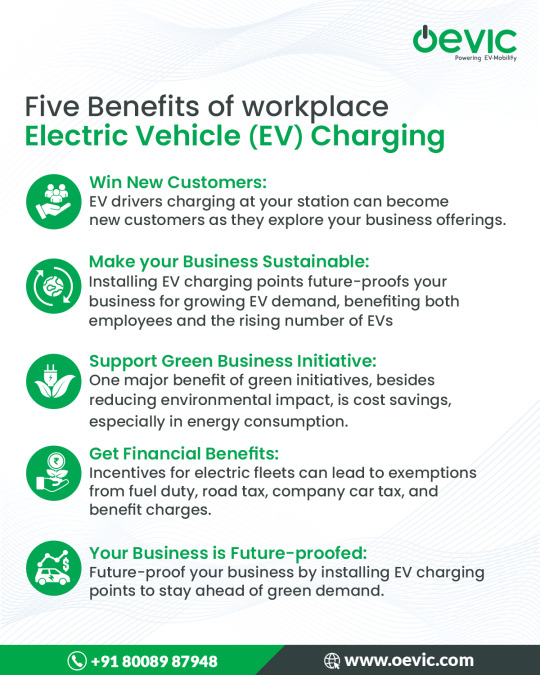
5 Reasons Why Every Business Should Install EV Charging Stations
For EV Charging Solutions Contact Us!
📱+91 8008987948
🌐 oevic.com
#evcharging#evbusiness#evchargingstations#evchargingatwork#sustainablebusiness#greenbusiness#futureproofbusiness#winnewcustomers#supportgreeninitiatives#getfinancialbenefits
0 notes
Text
Recyclable HDPE Blister Packaging Market Size Worth USD USD 2.41 billion in 2030, Globally, By 2030 At CAGR of 3.50%
The latest market report published by Credence Research, Inc. “Global Recyclable HDPE Blister Packaging Market: Growth, Future Prospects, and Competitive Analysis, 2016 – 2028. The Recyclable HDPE blister packaging market has witnessed steady growth in recent years and is expected to continue growing at a CAGR of 3.50% between 2022 and 2030. The market was valued at USD 1.9 billion in 2022 and is expected to reach USD 2.41 billion in 2030.
Understanding the Need for Sustainable Packaging
In recent years, the global packaging industry has been facing mounting pressure to reduce its environmental impact. Conventional blister packaging, often made from non-recyclable materials, has been a significant contributor to plastic waste and pollution. Consumers, governments, and businesses are increasingly seeking eco-friendly alternatives that promote a circular economy.
Opportunities in Recyclable HDPE Blister Packaging Market
Recyclable HDPE Blister Packaging Market presents a promising avenue for sustainable packaging solutions. High-density polyethylene (HDPE) is widely recognized as a highly recyclable material, making it an excellent choice for blister packaging applications. With increasing environmental concerns and the drive towards a circular economy, this market offers ample opportunities to cater to the growing demand for eco-friendly alternatives. Recyclable HDPE blister packaging offers numerous advantages, such as its lightweight yet sturdy nature, resistance to moisture and chemicals, and exceptional barrier properties.
Key Features and Benefits
1. Eco-Friendly Material
HDPE is a type of plastic that can be easily recycled into new products, reducing the burden on landfills and minimizing its environmental footprint. By adopting our Recyclable HDPE Blister Packaging, companies can actively contribute to a more sustainable future.
2. Durability and Protection
Our blister packaging offers exceptional durability, ensuring that the enclosed products remain safe and secure throughout the supply chain. This reduces the likelihood of damages, leading to reduced product wastage.
3. Versatility and Customization
We understand that each product requires unique packaging specifications. Our Recyclable HDPE Blister Packaging can be customized in various shapes and sizes to accommodate diverse products, providing both aesthetics and functionality.
4. Consumer Appeal
Consumers are increasingly making eco-conscious choices and supporting brands that prioritize sustainability. By utilizing our recyclable packaging, businesses can enhance their brand image and attract environmentally conscious customers.
Environmental Impact and Sustainability Goals
In a world where environmental issues are becoming more urgent, adopting sustainable practices is no longer optional but imperative. Our Recyclable HDPE Blister Packaging helps businesses work towards their sustainability goals and align with global initiatives, such as the United Nations Sustainable Development Goals.
Implementing Recyclable HDPE Blister Packaging
Switching to Recyclable HDPE Blister Packaging is a seamless process. Our team at [YourCompany] will collaborate with your business to design, manufacture, and implement the packaging solutions that best suit your products and branding requirements.
Browse 250 pages report Recyclable HDPE Blister Packaging Market By Packaging (Clamshell Packaging, Blister Packaging, Other Thermoformed Packaging) By Application (Pharmaceuticals, Electronics, Personal Care Products, Food, Others) By End User Industry (Healthcare, Cosmetics, Consumer Goods, Food and Beverages) By Recycling Process (Mechanical Processing, Chemical Processing)-Growth, Future Prospects & Competitive Analysis, 2016 – 2030 - Growth, Future Prospects & Competitive Analysis, 2016 – 2030)- https://www.credenceresearch.com/report/recyclable-hdpe-blister-packaging-market
Top Report Findings in Recyclable HDPE Blister Packaging Market
Moreover, it was found that pharmaceuticals and healthcare industries hold considerable revenue share due to stringent regulations for tamper-proof packaging requirements. The report also uncovered emerging trends like the increasing utilization of recycled materials for manufacturing blister packs and collaborative efforts between manufacturers and recycling facilities to establish closed-loop systems for material recovery.
Furthermore, geographic analysis showed North America leading the market owing to strong adoption rates of eco-friendly practices across various sectors coupled with robust infrastructure facilities for recycling processes. Overall, these findings demonstrate a positive outlook for the Recyclable HDPE Blister Packaging Market as businesses strive towards implementing sustainable solutions while meeting consumer expectations effectively.
Why to Buy This Report-
•The report provides a qualitative as well as quantitative analysis of the global Recyclable HDPE Blister Packaging Market by segments, current trends, drivers, restraints, opportunities, challenges, and market dynamics with the historical period from 2016-2020, the base year- 2021, and the projection period 2022-2028.
•The report includes information on the competitive landscape, such as how the market's top competitors operate at the global, regional, and country levels.
•Major nations in each region with their import/export statistics
•The global Recyclable HDPE Blister Packaging Market report also includes the analysis of the market at a global, regional, and country-level along with key market trends, major players analysis, market growth strategies, and key application areas.
Browse Complete Report- https://www.credenceresearch.com/report/recyclable-hdpe-blister-packaging-market
Visit our Website- https://www.credenceresearch.com/
Related Reports-
Agriculture Packaging Market- https://www.credenceresearch.com/report/agriculture-packaging-market
Chemically Recycled Flexible Packaging Market- https://www.credenceresearch.com/report/chemically-recycled-flexible-packaging-market
Browse Our Blog- https://www.linkedin.com/pulse/recyclable-hdpe-blister-packaging-market-size-expected-shukla
About Us -
Credence Research is a viable intelligence and market research platform that provides quantitative B2B research to more than 10,000 clients worldwide and is built on the Give principle. The company is a market research and consulting firm serving governments, non-legislative associations, non-profit organizations, and various organizations worldwide. We help our clients improve their execution in a lasting way and understand their most imperative objectives. For nearly a century, we’ve built a company well-prepared for this task.
Contact Us:
Office No 3 Second Floor, Abhilasha Bhawan, Pinto Park, Gwalior [M.P] 474005 India
0 notes